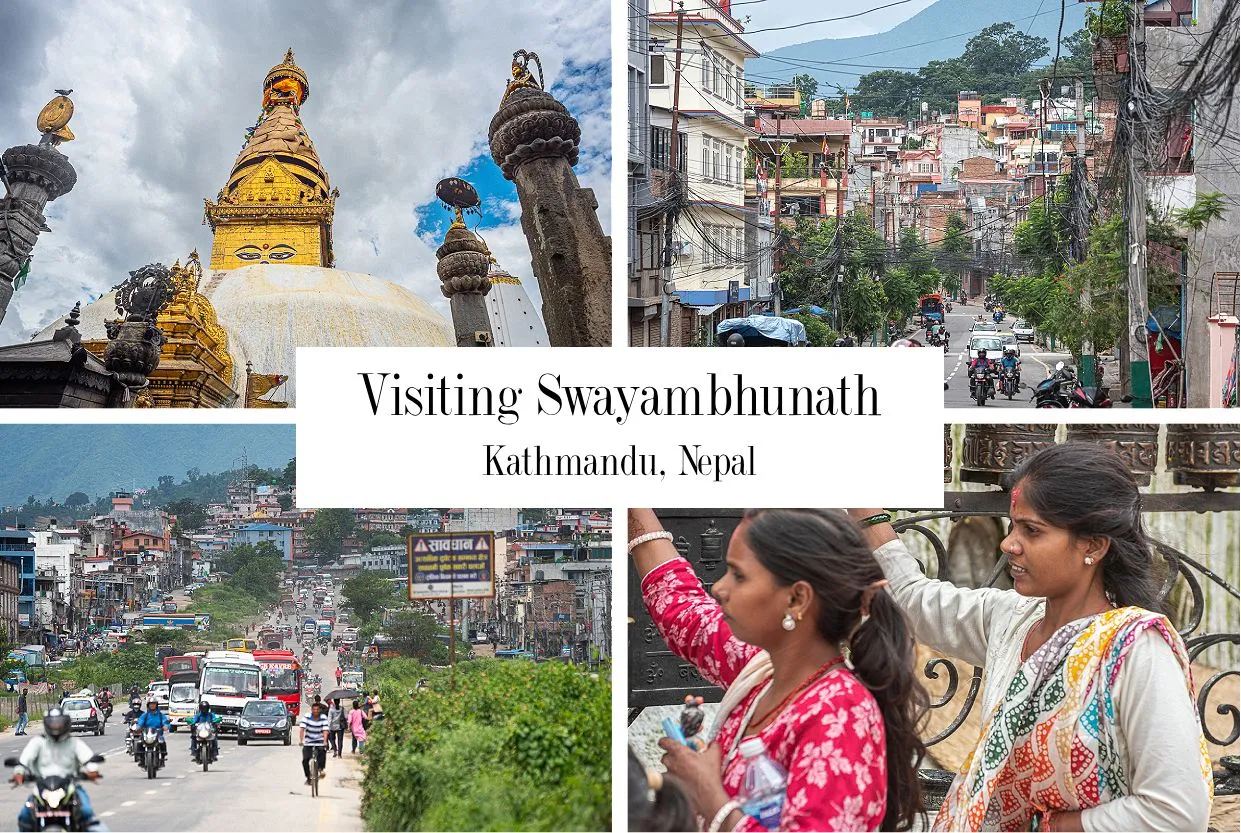
Changing subcontinents is always a thing bigger than just crossing the border to the nearest country - higher expenses, more planning, and most importantly, it means leaving. Like, if I leave Southeast Asia, it means I’m ready to say goodbye to it. It means I might not come back anytime soon, maybe never. Who knows.
One of the decisions I had to make was choosing a type of visa on arrival. I ended up paying 125$ for 90 days. A lot of time for being in the same place, Kathmandu, so thinking about going closer to nature when the monsoon season turns milder - yup, July is the rainiest month.
Choosing a neighborhood to live in is another thing to ponder. I decided to stay slightly away from the city center to enjoy lower prices, the authentic lifestyle, and less tourism hustle. When I found Peace Homestay near the temple hill inhabited by monkeys, with excellent reviews and ranking on booking sites, offering affordable rooms - 5.4 USD for a twin - I realized that the search for a new home ended.
More than a week here, sharing photos.
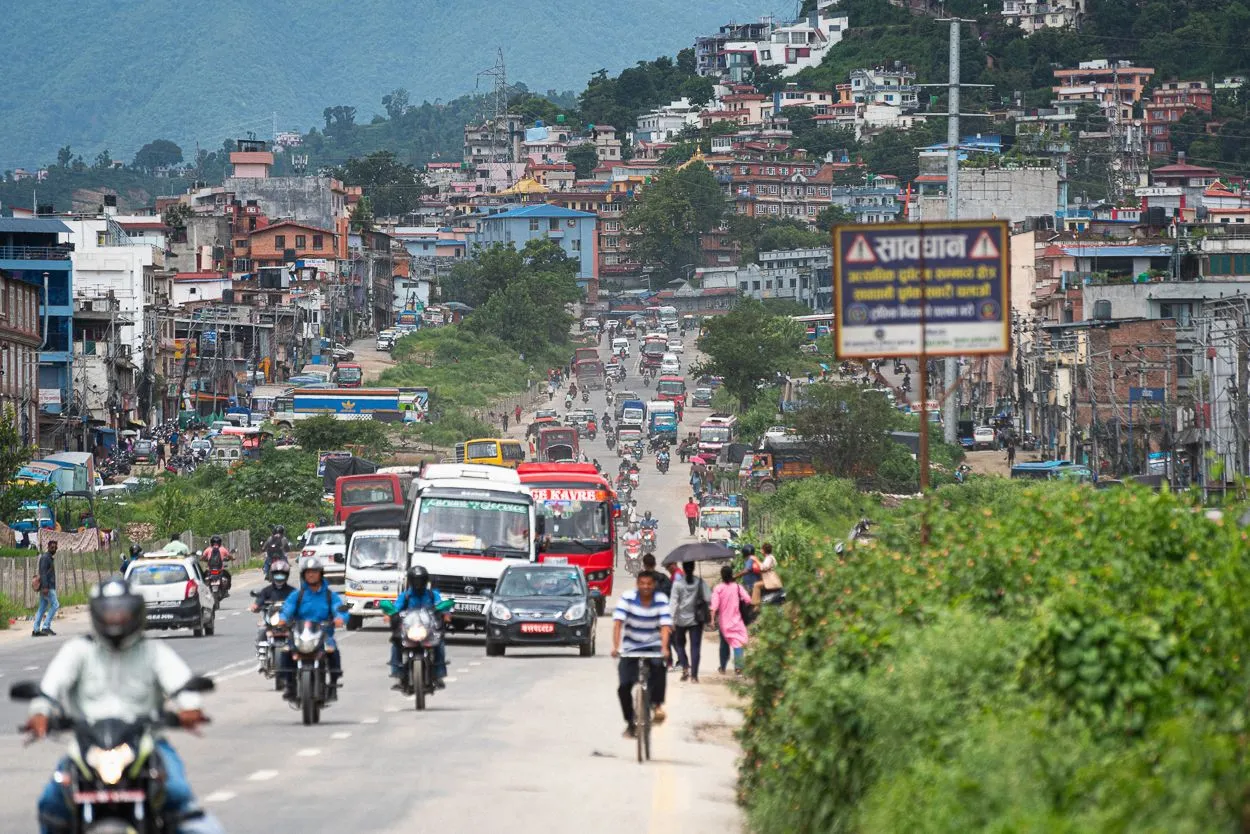
The Ring Road, the city's main transport artery, crossing it is a challenge - no traffic lights there. But, anyway, it's better than Vietnam.
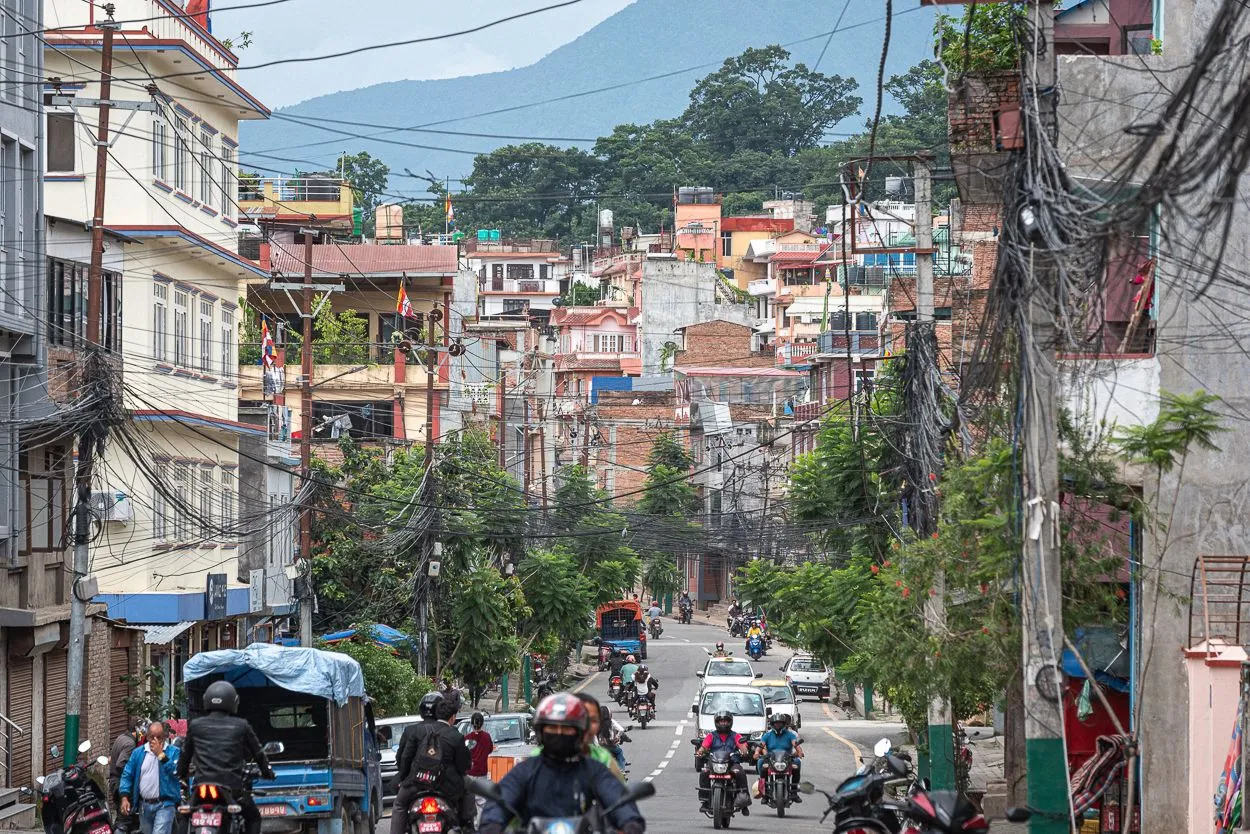
Kathmandu has its distinguished look. At least, it doesn't remind anything you can see in Southeast Asia. A forest of houses, with water tanks on the tops, and generally active life on rooftops - decorations like flags, drying clothes, growing veggies, like cucumbers and tomatoes...
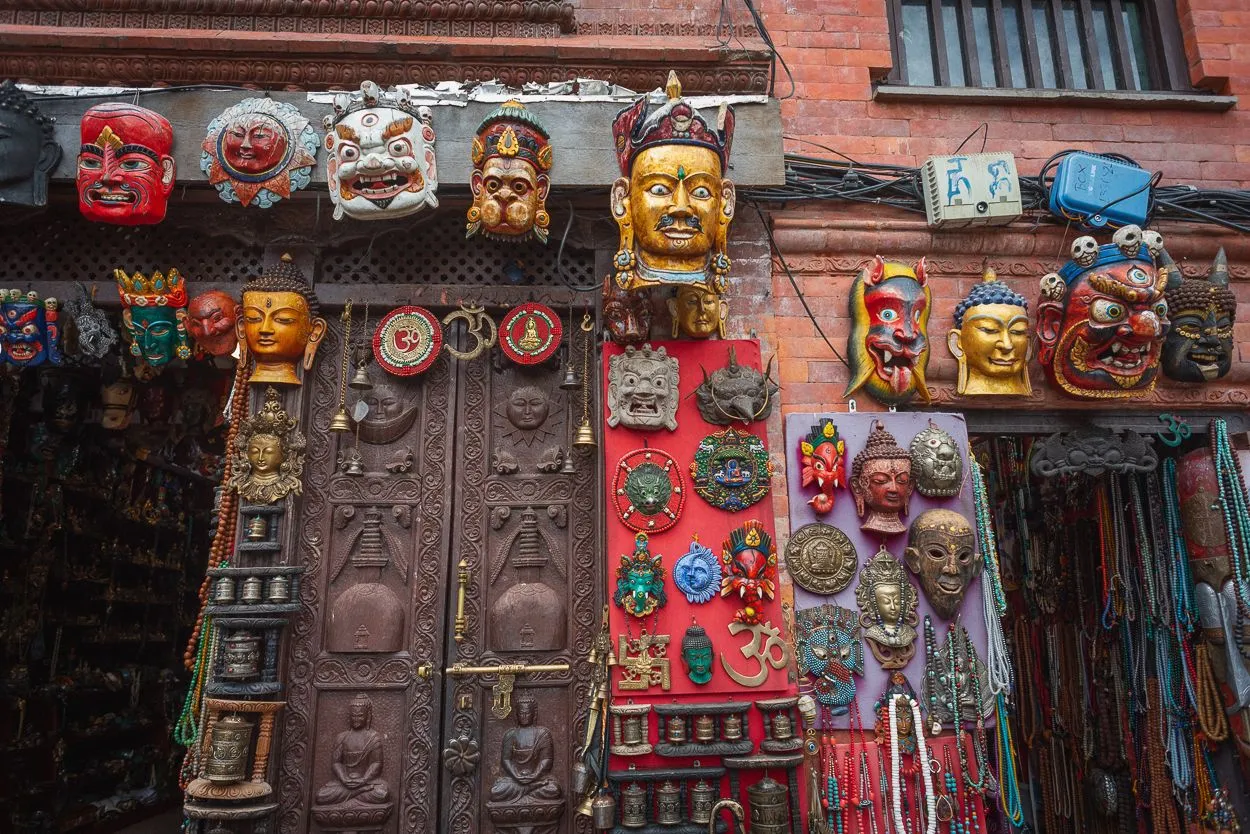
The culture is diverse. Kathmandu was once inhabited mostly by Newars - Asian-looking Buddhists who spoke a Sino-Tibetan language. In the late 18th century, their neighbors, the Indian-looking Hindu Gorkha people, who spoke an Indo-Aryan language, conquered Kathmandu. Since then, the city has become a melting pot of these two cultures, along with many others belonging to Nepal's numerous ethnic minorities.
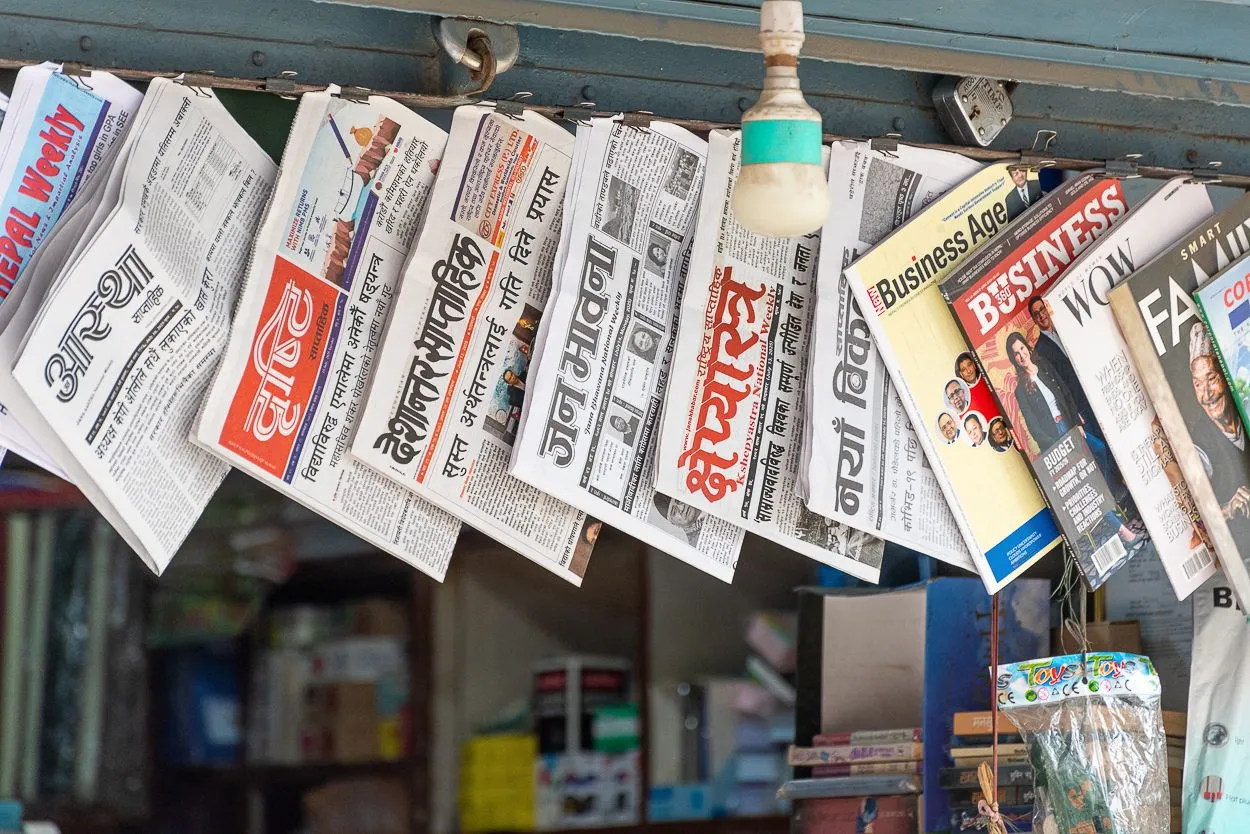
Many historical buildings in Kathmandu belong to Newari Buddhist times. However, the lingua franca is Nepali, a cousin of Hindi, and it is written in the same Devanagari script.
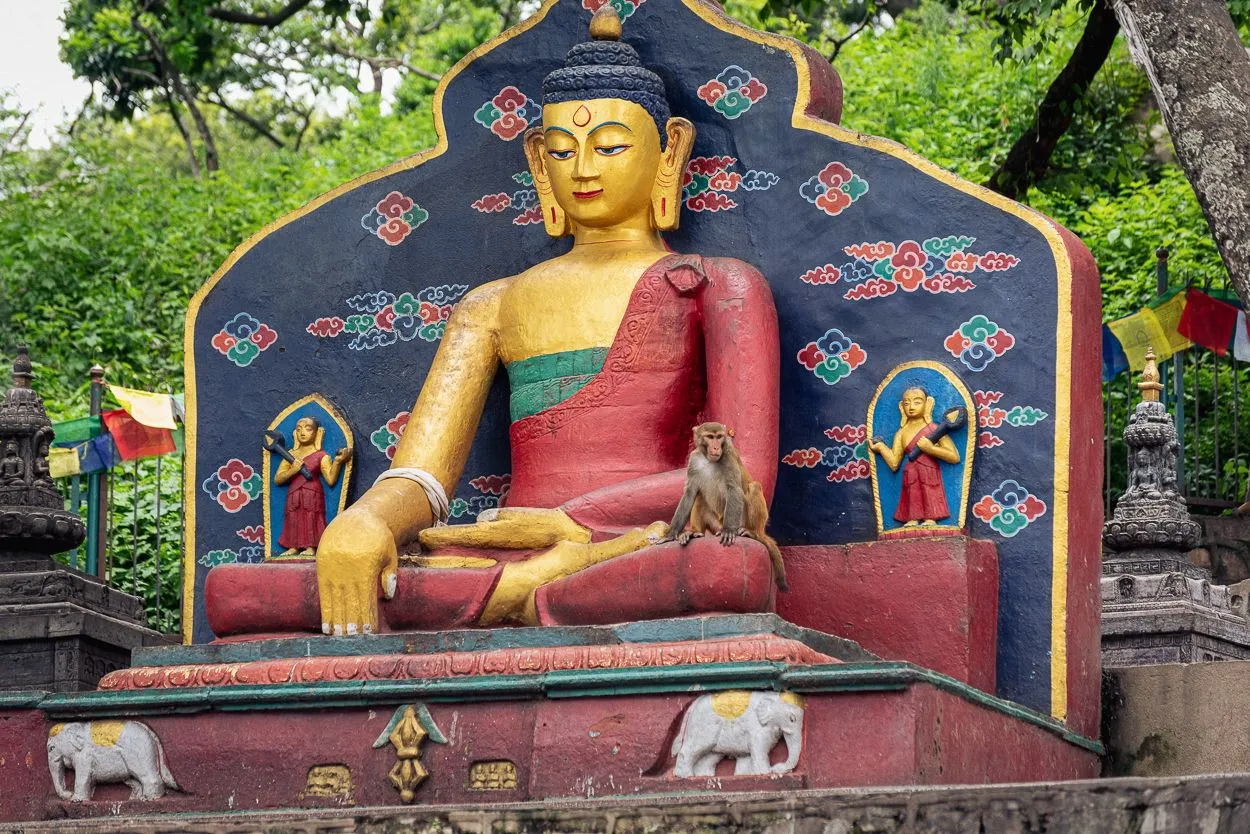
Okay, here we are, the monkey hill.
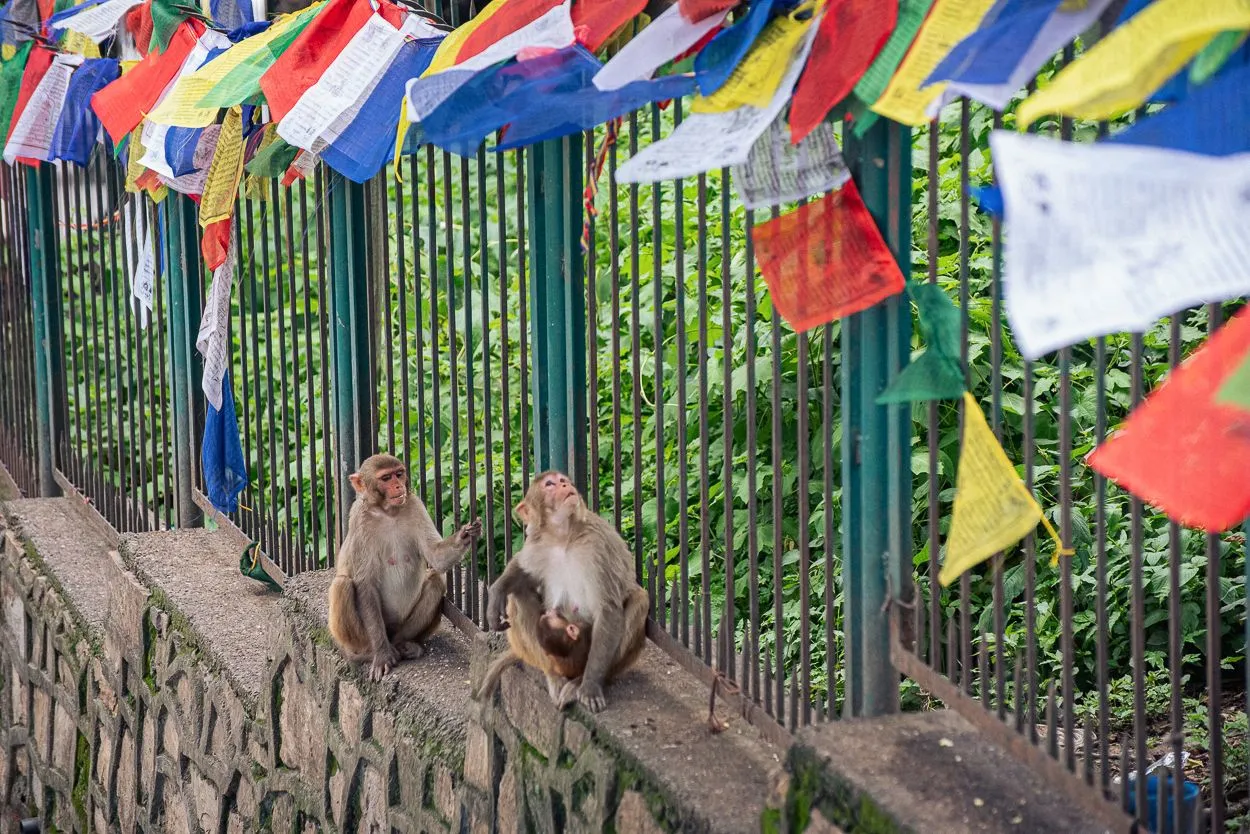
These are rhesus macaques, while Thailand's species is the long-tailed macaques, same-same but different, as Thais say.
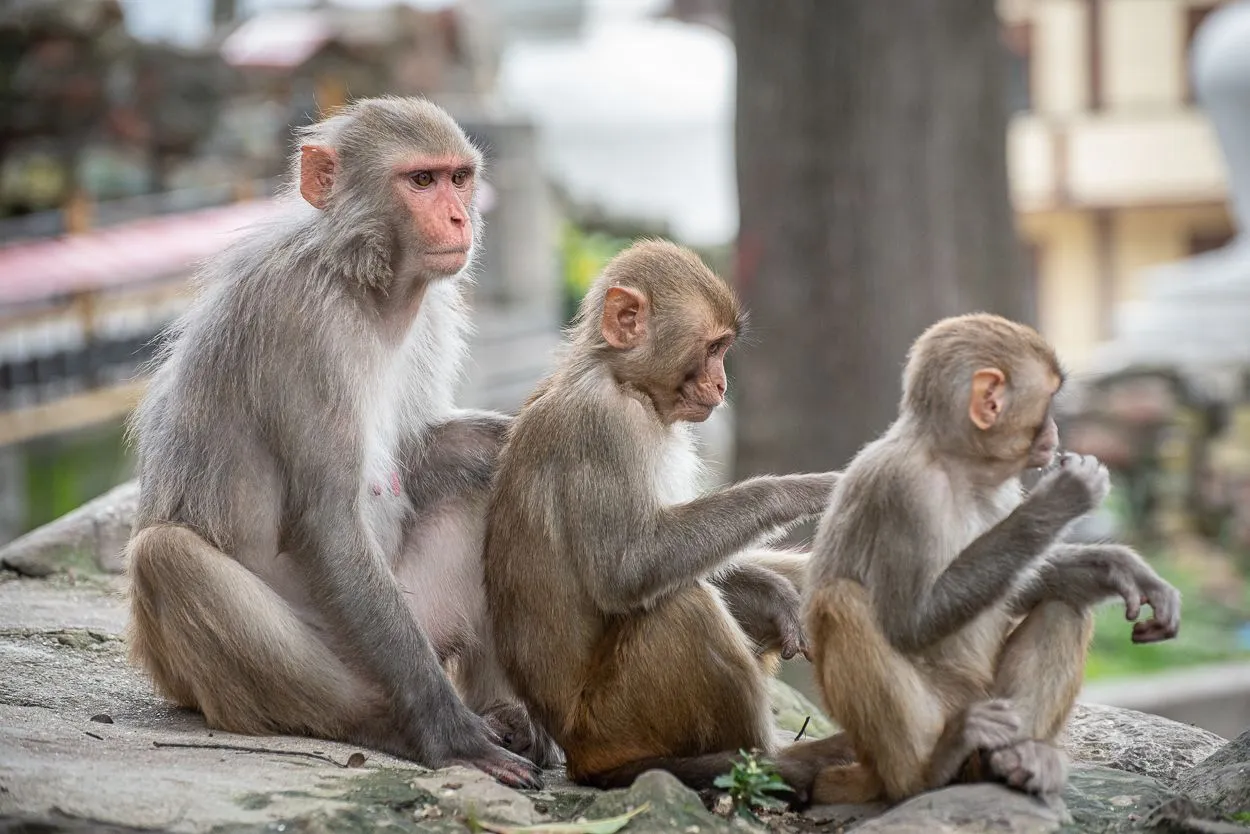
Going up the stairs to the sacred place:
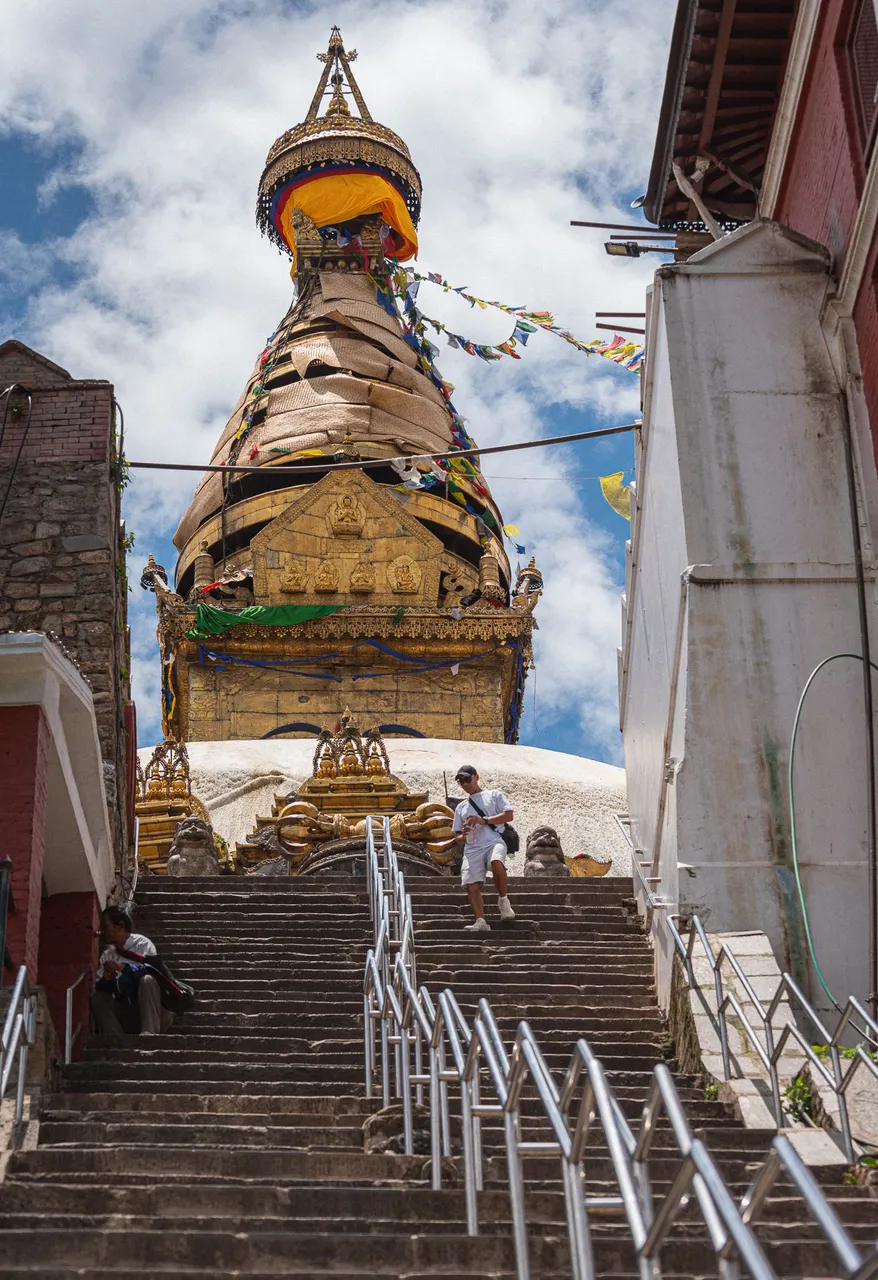
A Buddhist place on the top of the hill, Swayambhunath, was founded, at least, in the 5th century CE.
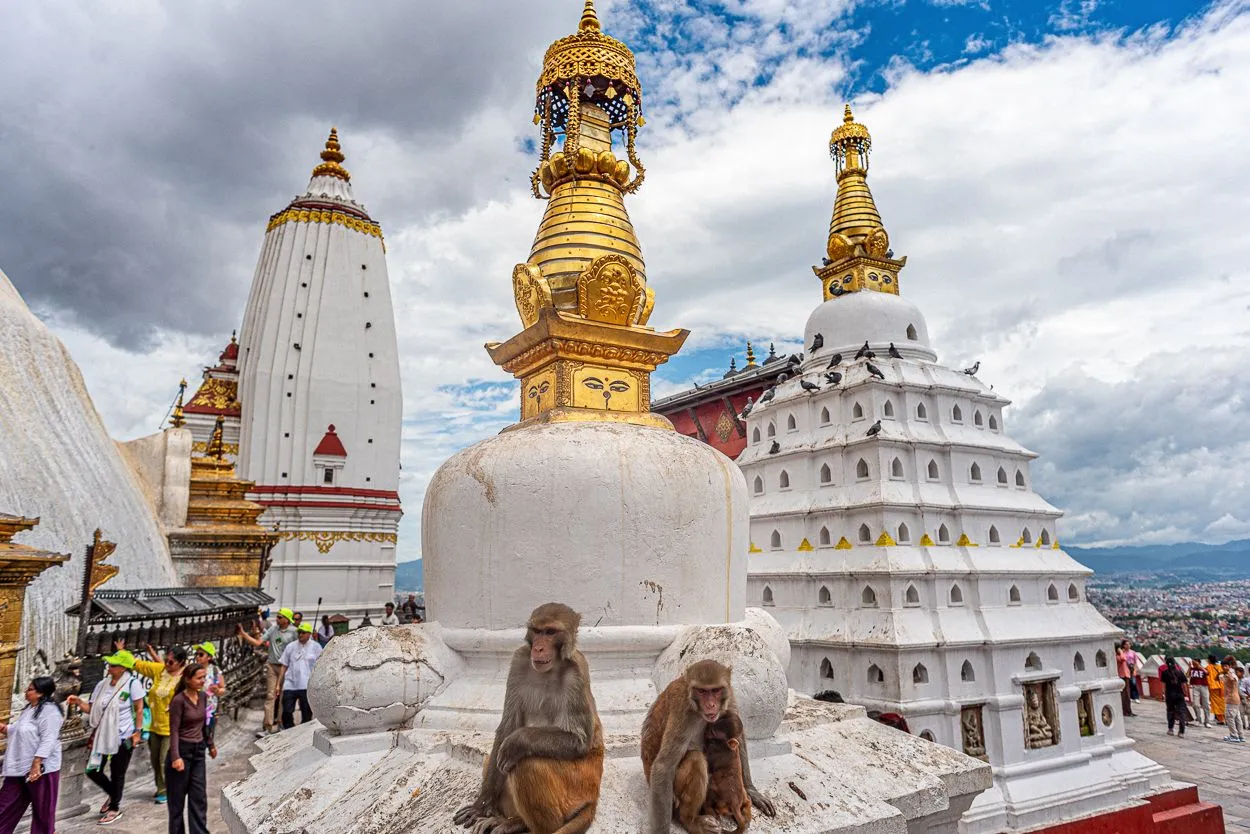
However, a Buddhist scripture about the origin of the Kathmandu valley claims that a lotus seed was sown on this hill eons ago and then:
The flower emitted eternal radiant form of light with the Five Great Buddhas, Vairocana, Akshobhya, Ratnasambhava, Amitābha and Amoghasiddhi appearing on each side of the differently coloured rays of the light.
Later, an ancient king decided to protect the place by concealing the light and making only the great stupa visible. This stupa:
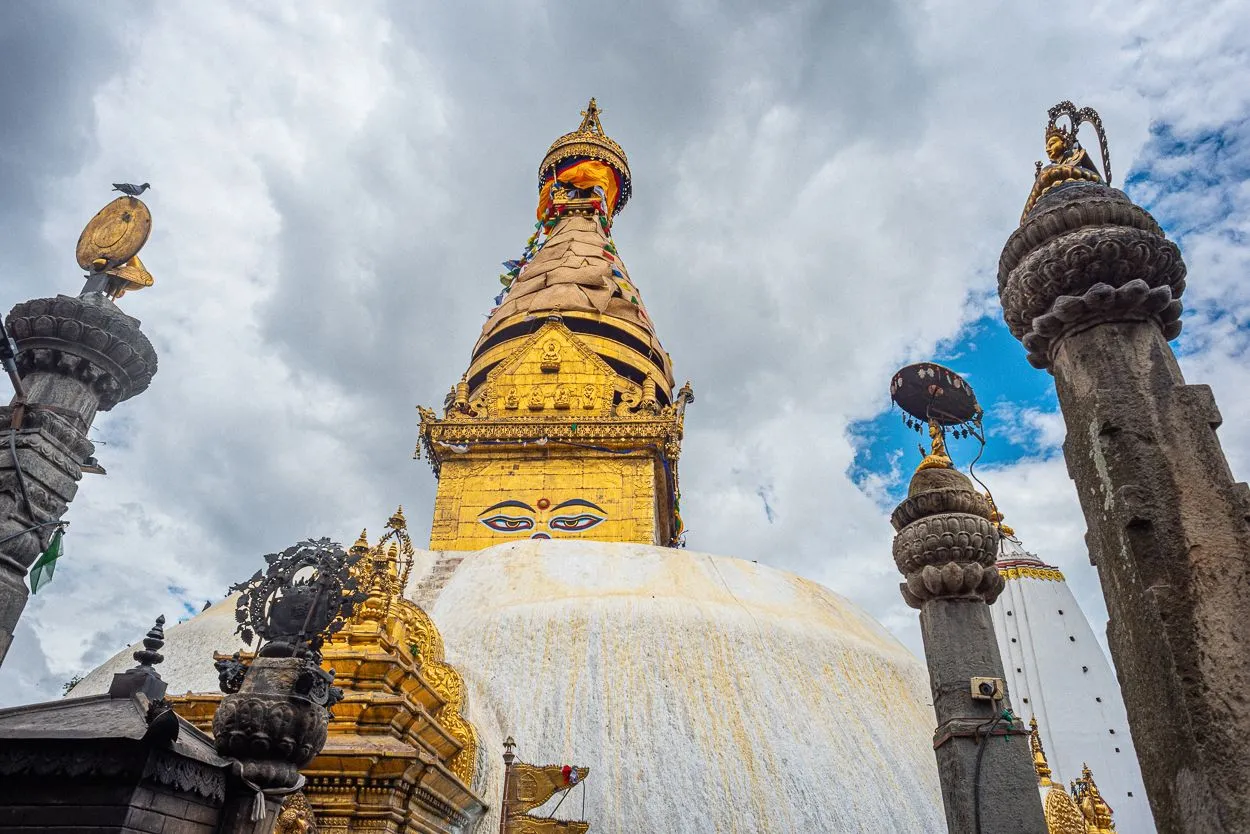
Swayambhunath is one of the three most sacred places for the Newar people.
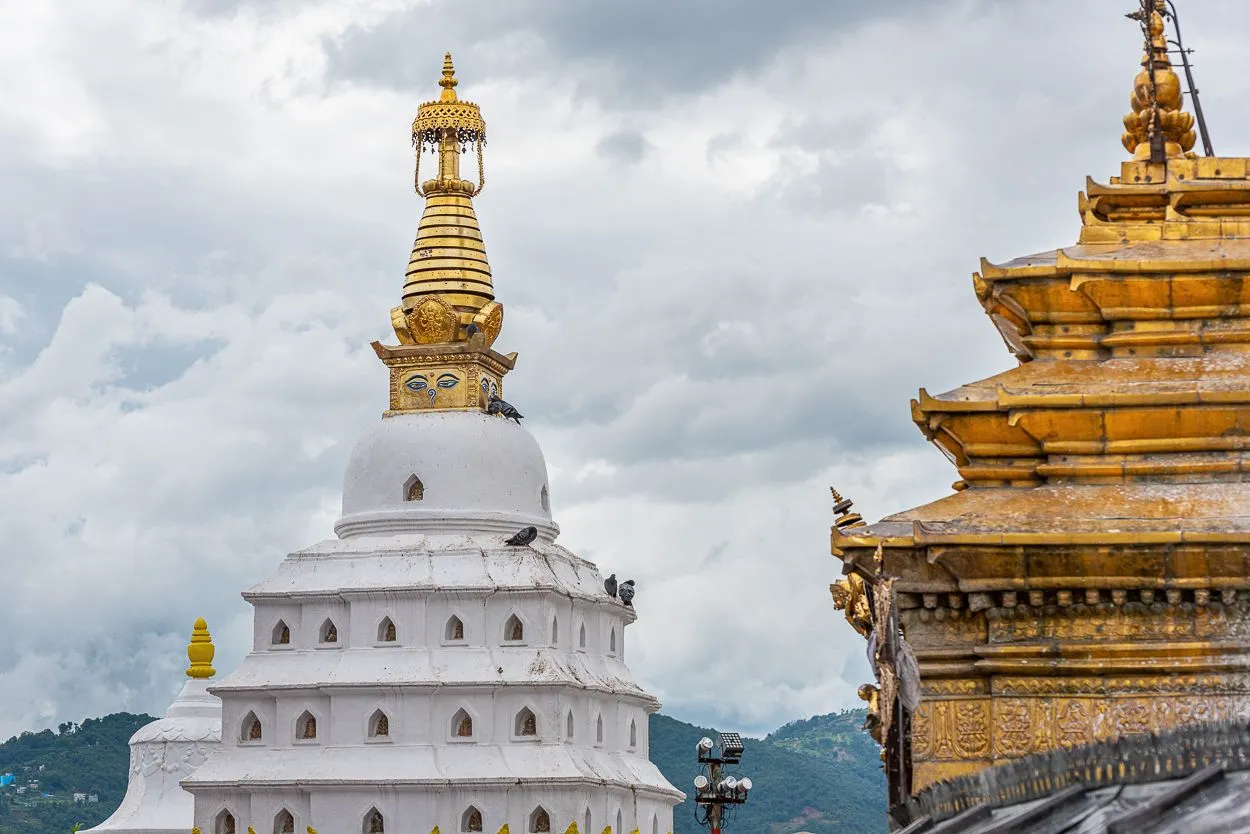
Even though Swayambhunath is in Nepal, it has large religious significance for Tibetans. For them, it's one of the major pilgrimage places outside of Tibet.
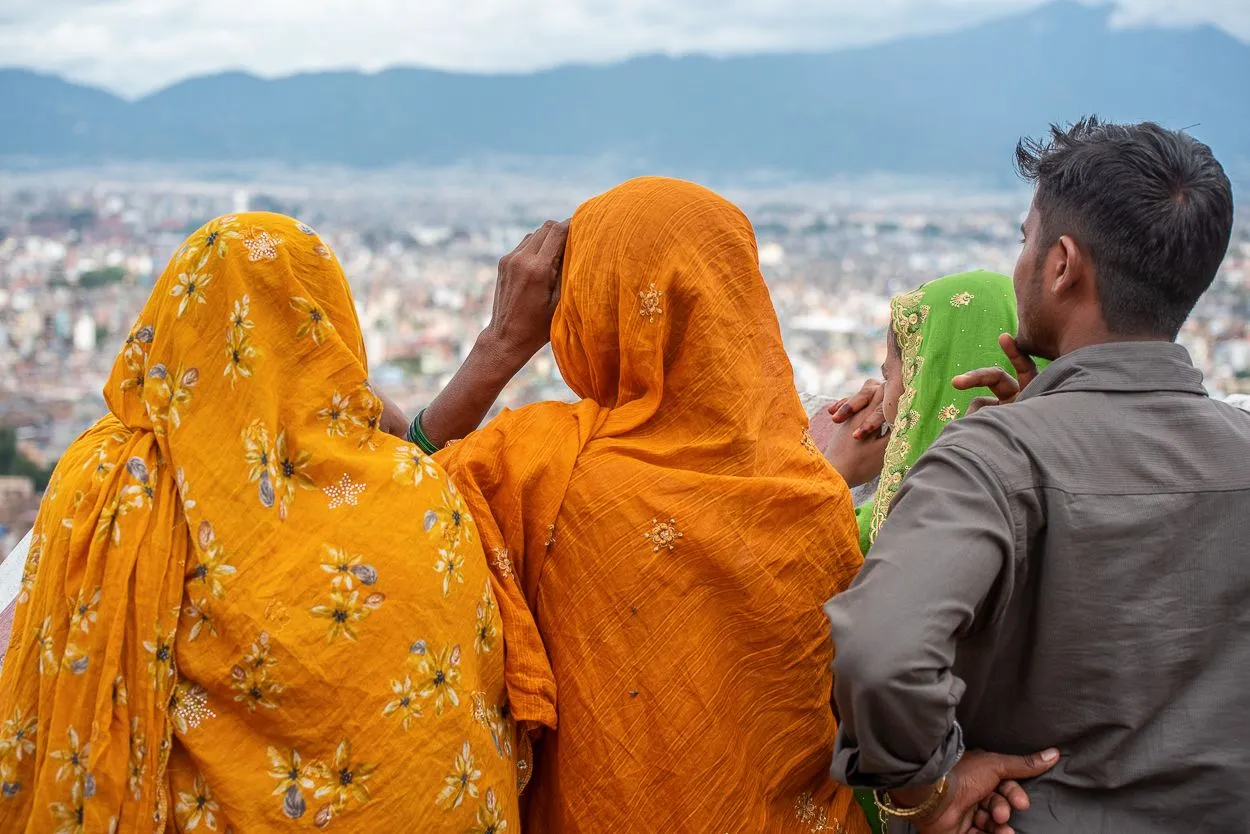
Swayambhunath also has Hindu shrines, so followers of Hinduism worship the place as well.
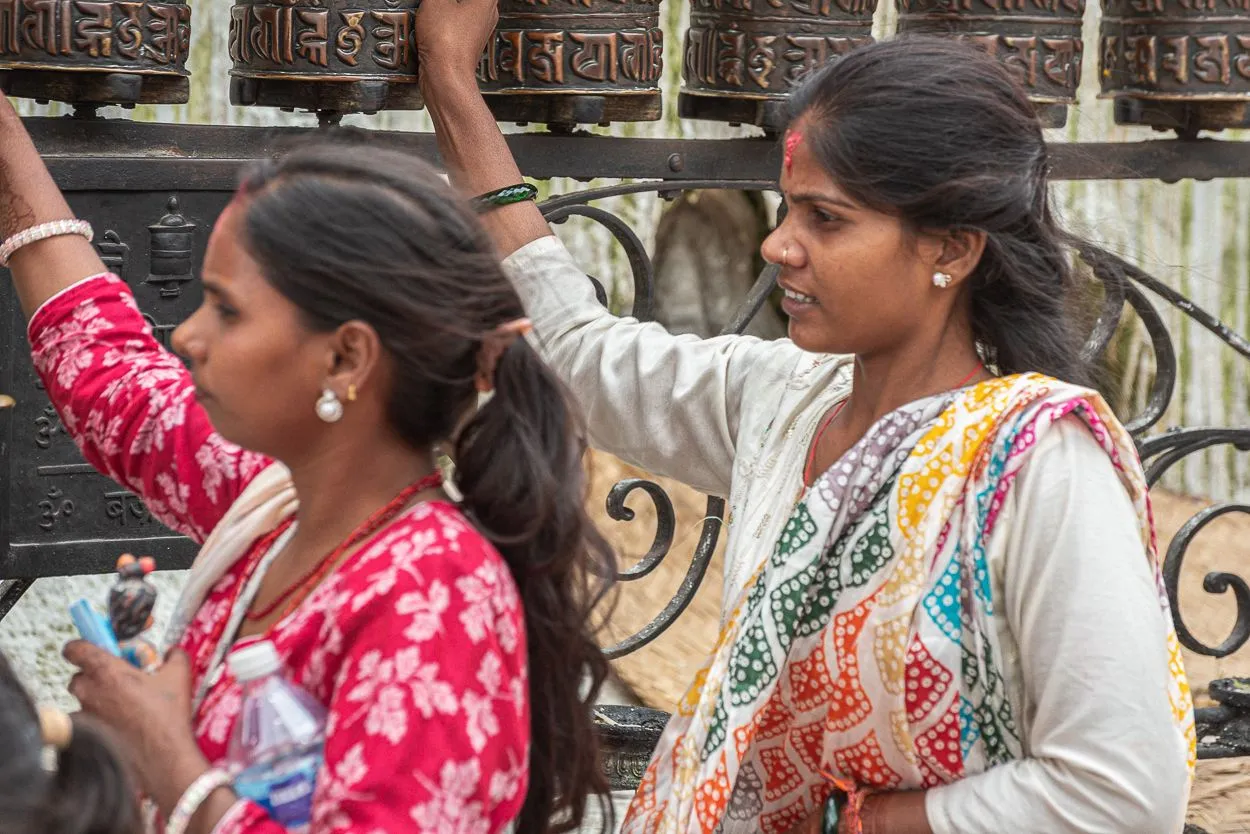
And, of course, Swayambhunath attracts many travelers - apart from Nepali visitors, you'll see there Indians, Chinese, Westerners, etc. I personally visited four times: one time this year and, when I was in Kathmandu 10 years ago, I visited Swayambhunath three times because I worship these little guys:
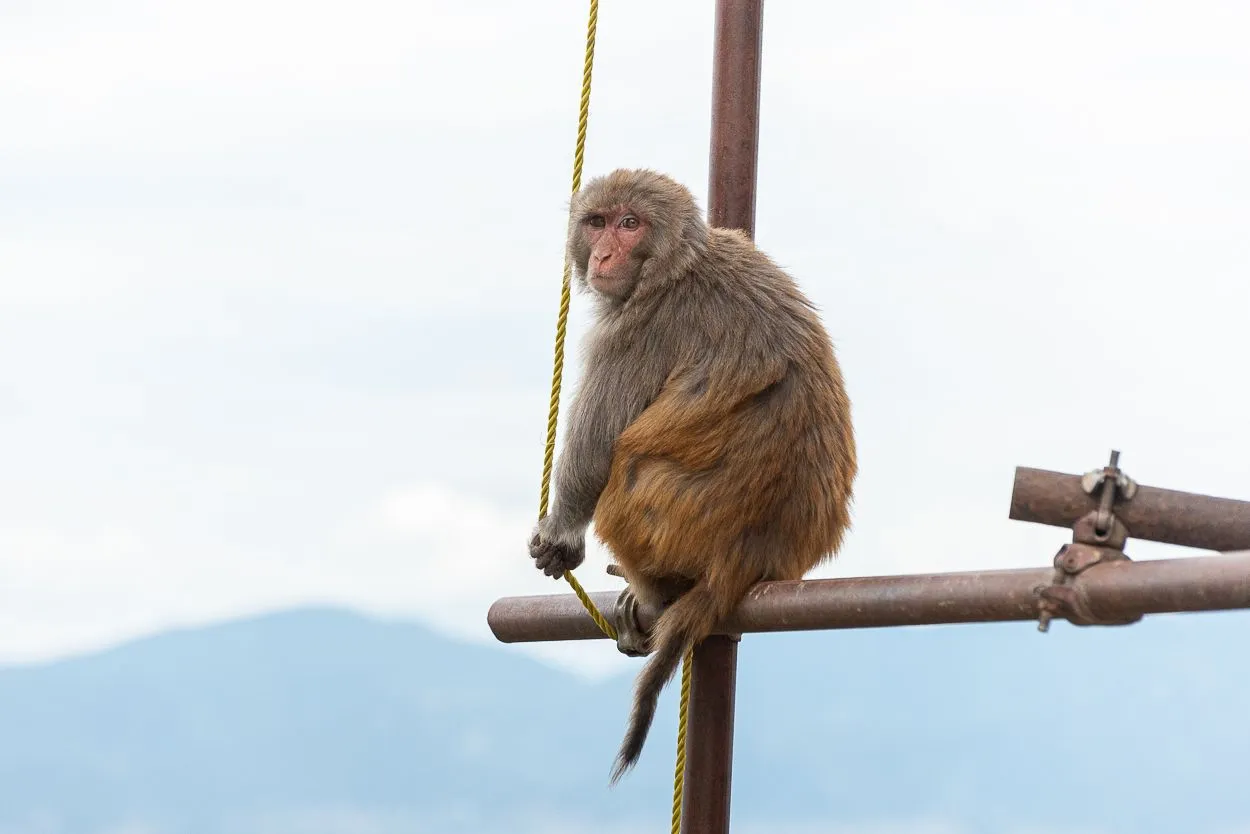
Hairy, short-tailed little bastards 😁, I'll definitely post a separate story about them.
And look at another treasure of this site:
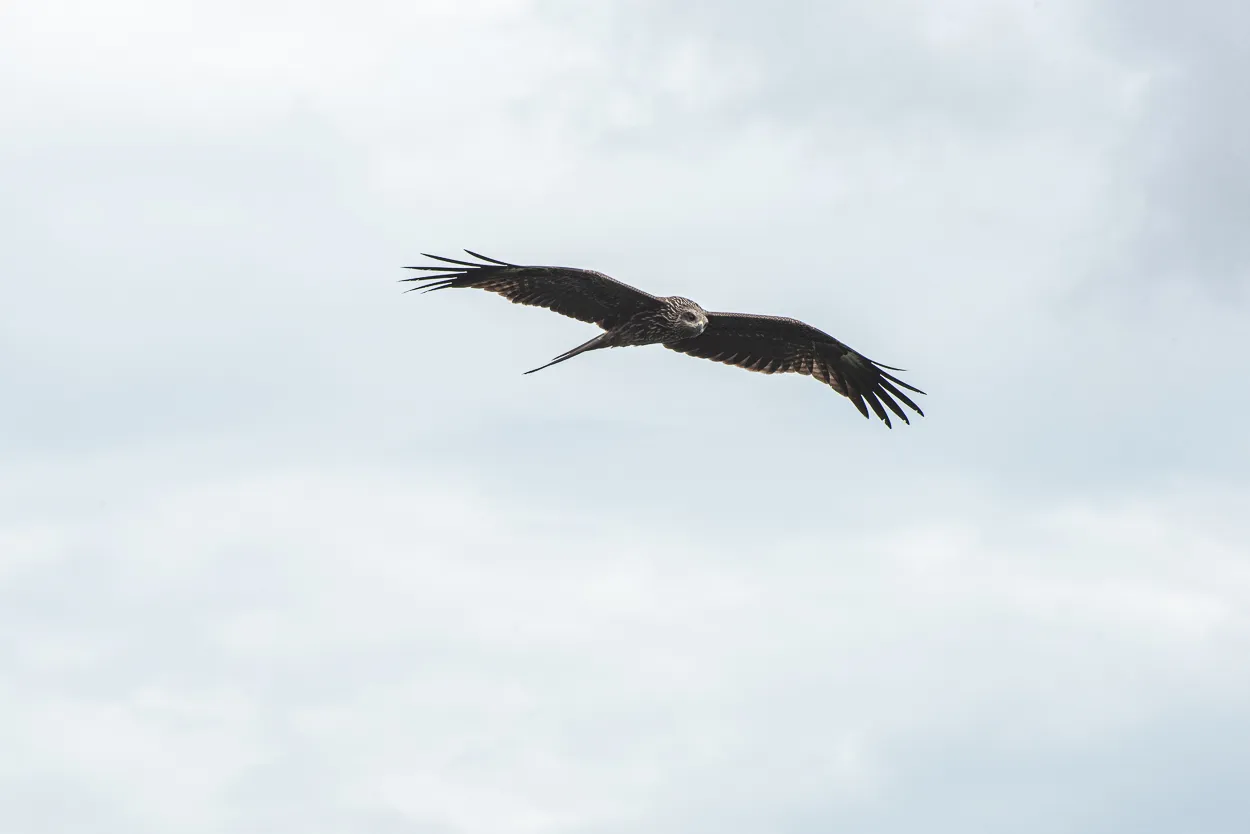
Black kite (Milvus migrans). Many of these birds are circling above the temple hill. Planning a post in c/Feathered Friends. 🙂
Hope you liked this set of images. Thanks for stopping by, and stay tuned!
All photos were taken with a Nikkor 70-300mm and a Nikkor 24mm on a full-frame DSLR Nikon D750 by the author on July 16, 2025, in Kathmandu, Nepal